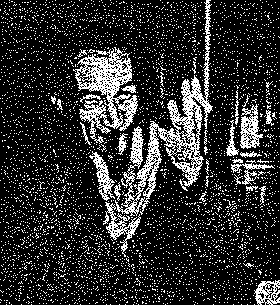
7 Items on the Net
by
mailto:ziel@khm.uni-koeln.de
1.
Now and again unforeseen events burst into the
telematic Net. In a December issue (15.12.1994) of the magazine FINEART - ART
& TECHNOLOGY NETNEWS, Jeremy Grainger broke the AP news story via Fringeware
that Guy-Ernst Debord had committed suicide. The report was terse: "He was 62
... Little known outside France, Debord denounced what he called >the
show-biz society< and declared that performing arts should be based on
powerful emotions, passions, and sexual desire. His ideas were influential among
theoreticians and essayists who achieved prominence in the May 1968 student-led
cultural revolt that shook French society." That was it. That the co-founder of
the Situationist International - who in "Society of the Spectacle" had diagnosed
more than twenty years ago that all direct experience had given way to
representation, who in the same book had attested that telecommunication
"reunites the separate but reunites it as separate" - had died by his own hand
did not affect the tidily arranged symbols on the Net one pixel nor their
author. In 1952, at the age of 23, Guy Debord made a film with a dialogue
seemingly organised on random principles. The title was "Howlings in Favour of
Sade". At one point the second voice says, "The perfection of suicide is in
ambiguity." In the script this is followed by a stage direction: "5 minutes'
silence during which the screen remains dark."

2.
The way language is used on the Net is most affirmative of life. As a
principle, the language is positive, animated, apologetic, smart. It bristles
with energy. It is an electronic fountain of youth. The computers, their
technical designers, and the connections set up enable and facilitate and
support (for example, nature). Programs lead and organize and select. Landscapes
are created as are populations or generations, that even develop dynamically and
are at liberty to unfold in (self) organization. The interfaces must be
interactive and empathic (in the Aristotelian sense) or even biocybernetically
interactive, that is, they have to organize something alive within the closed
circuit. Their secret agents don't have trenchcoats with turned-up collars to
hide their faces, they're not up to anything, as yet you will search in vain for
them in the underground; they are tourist guides standing in the spotlights,
inviting us to go surfing, leisurely. Many decades after their discovery by
theoretical physics between the wars, the waves of possibilities in which
quantum truths are now formulated exclude the violence of contexts/connections,
they are not waves of pain nor of ecstasy. "The linking of sensor data with
parameters of user interaction permits meaningful correlations over and above
various output modalities." In Chris Marker's "Sans Soleil", inspired by the
music of Mussorgsky, we encounter a Japanese man who is always making lists of
things, for example, of things that make the heart beat faster. I started to
make a list of phenomena, phantoms, and modi that I miss on the net, and in the
columns of speech on the subject that are getting longer by the minute. Here are
some of the favourite substantives:
ambiguity
anger
attack
collapse
crime
cruelty
danger
dark
anguish of
spaces
daze
death
deviance
discomfort
discongruence
doubt
drive
ecstasy
eczema
evil
excess
hysteria
incest
interruption
irritant
lust
macrogenetosomia
praecox
monster
neurosis
obsession
passion
pathology
risk
scream
seduction
uneasiness
yearning
3.
Although many differences existed between, for example, Artaud, Bataille, Duchamp,
or Leiris, for all that the dissidents of the Surrealist movement had a common
focal point from which they developed their relationship to the (intellectual
and art) world: they disrupted their own marginal tributary as well as the
larger main-stream because of their rejection of any kind of functionalized
ethics, their resistance to one-dimensional rationality, their celebration of
unrepressed pleasure, and their aesthetic development of desire as an
existential mode. To them, it was of imperative significance that their thinking
be far removed from any hierarchical structures and that their aesthetic
practices be immanently and wildly heterogenous juxtapositionings (philosophy
and cultural critique took over these paradigms at a much later date, notably
with the work of the duo Deleuze/Guattari). Particularly for characters of a
passionate and tortured/suffering disposition, like Antonin Artaud, the focal
point of artistic praxis was the nondispersable duality of experience and
sensation (with a radicalness only comparable to Bataille's work in literature),
which he confronted with the pure praxis of the concept; indeed, this also
essentially shaped the work of Duchamp, for all his extravagances and craziness.
On what does the hyperrealistic avant-garde orientate itself? What orientation
is it capable of elaborating and capturing for itself? The unconscious appears
to have been consciously written to death after Freud and Lacan (who neglected
to adhere to his own dictum that "there are problems one must decide to abandon
without having found a solution"), and, above all, after their innumerable
adepts and interpreters. In the 1950s and 60s, Activists, Situationists, and
Performance Artists threw their own bodies into the fray, to the point of (self)
mutilation and (self) immolation, against the discourse and the dispositives of
power. So, will there now be a re-orientation towards concepts, towards the
natural and life sciences, towards the illusion of a continuity, a flow, a
beautiful order in chaos? Or will there be the creation of new, artificial
bodies in the form of bodies of knowledge and their mise-en-scane as
aesthetically experienceable volumes in the tele-age, moving and ephemeral
artefacts in antiquated space?
4.
The experimental work of
the group >Knowbotic Research< suggests one possible avenue: their
creations and workshop processes are factional, that is, they are extracted both
from empirical data and from the realm of fiction, to which they always seem to
want to return. In Circe's Net they strive to direct its visualization
(knowledge and its organisation) while at the same time hinting at a seduction,
without which art as a sensibilizing terrain for the experience of the enigma is
no/thing at all. In order to develop this character of the double-agent, the
"Knowbots" have been assigned a second mode of existence that can assume form
outside of the Net: in the event, in the one-off mise-en-scane of publicly
accessible space, they become once again empirical bodies, sensations.
5.
The most complex mysticism praxis with the most complex
language that I know of is the theoretical Cabala: "a technique for exercizing
reason or, instructions for use of the human intellect ... it is said, that
angels gave the Cabala to Adam after being expelled from the Garden of Eden as a
means whereby to return there" (Wolff). The 10 Sephiroth with their 22
connecting pathways constitute a sheer inexhaustible, network-like reservoir of
associations, connections, punctuations; its construction principle is binary
and it is built of the basic tensions of theoretical reason (CHOCKMAH) and the
power to concretize, to form (BINAH). The only meaningful mode in which the
Cabala can be read and re-revealed over and over again is that of
interpretation. In this, the Cabala and art are akin. Edmond Jabas Texts are
philosophical poems. In a discussion with Marcel Cohen about the unreadable, he
was asked what he meant by the "subversion" of a text, to which he replied by
referring to the beginning of each and every subversion:
disruption/interference. The paradox, that he himself operates with
grammatically correct sentences and words that retain their connotative
meanings, he resolves cabalistically: "I have not attempted to ruin the meaning
of the sentence nor of the metaphor: on the contrary, I have tried to make them
stronger. It is only in the continuity of the sentence that they destroy
themselves, the image, the sentence, and its meaning when they are confronted
with an image, a sentence, a meaning, that I consider to be just as strong. To
attack the meaning by rebelling against the sentence does not mean that it is
destroyed. On the contrary: it is preserved because a path to another meaning
has been opened up . All this appears to me as though I were confronted by two
opposing discourses that are equally persuasive. This results in the
impossibility of privileging one over the other which, in turn, constantly
defers the control of the meaning over the sentence. Perhaps the unthinkable is
just simply the mutual suspension of two opposite and ultimate thoughts." There
be a key here to how aesthetic action within orders and structures might unfold;
between Pentagon, academe, and the market which afford only slim possibilities
for temporary interference, the filigree weaving of labilities.
6.
On the Net, there is no art of this kind (yet): it has had
no time to develop a notion of the Other, the vanishing point of which would be
Death. The model for Net Culture is life and because there it has relinquished
its unique existence, it easily and usually becomes a model. The algorithms used
by the engineers and artists who are working more or less secretly on the orders
of the Circe Telecom, have been copied from the bio-logical, life form(ula)s
translated into mathematics. Genetic algorithms are useful and fascinating
because of their proximity to this life. They are bursting with strength and
confidence. For art, it would be worthwhile to attempt to invent algorithms of
(self) squandering, of faltering, of ecstasy, and of (self) destruction as an
experiment. In full recognition and acceptance of the risk that perhaps there
would not be much to see or hear, these would be transformed into sounds and
images. In the universal shadow, in the dark halo, where the strong light bodies
of knowledge of Knowbotic Research move but that also prevents them from
dispersing, there is a presentiment of this secret.
 7.
7.
"When
art becomes independent, represents its world in dazzling colours, a moment of
life has grown old, and it cannot be rejuvenated with dazzling colours. It can
only be evoked in remembrance. The greatness of art only begins to appear at the
dusk of life."(Guy Debord, The Society of the Spectacle. Rebel Press, London
1992, p. 71) 


